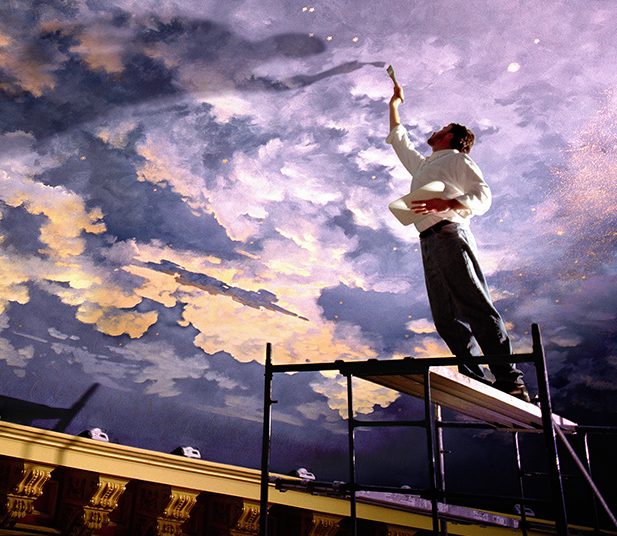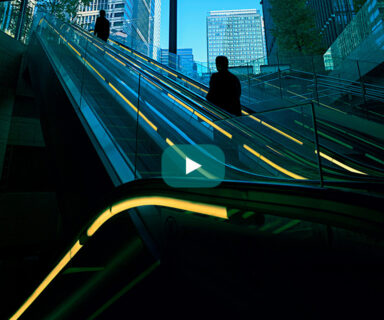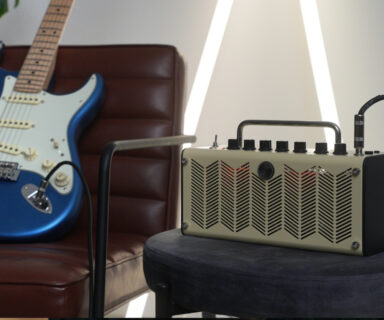- November 29, 2021
- Content
Beyond Words: Why “Design-Forward” for Content Creation?
Among B2B content marketing teams, design is still far too often introduced in the last stages of the process. Instead of using a more collaborative approach, completed copy is basically thrown over the fence to a graphic designer – who’s then charged with “sprucing it up” as best they can. But because they weren’t there at the start, designers often don’t understand the objective and they don’t know the story you’re trying to tell. As a result, design elements can become little more than window dressing. Worse, the overall effect may feel disjointed or forced, because copy and design aren’t actually working well together to support and amplify your message. At the most basic level, if your audience isn’t drawn in, you fail. And if they repeatedly find your visuals confusing or your content visually lackluster, over time, you can easily fail to capture their interest at all.
The best assets (and even more so, serial campaigns and programs) deliver their stories using a cohesive approach. To achieve this kind of impact nirvana, you’ll need to bring design thinking – what an asset will look like, how users will interact with it, what points should be called out, etc. – into the creation process. At TechTarget, we rely on a few core concepts, some highlighted below, to actively enable this process and streamline better asset creation as a whole.
#1 – Incorporate visual concepting into asset development
Every great piece of content starts with an idea, and then there’s a lot of thinking and effort that goes into transforming the idea into a polished asset. It’s early in this process that you want to start thinking about how to visually communicate the idea. We like to begin with deciding on the best format for the effort. We consider how deep we’ll be digging into the topic, our audience’s preferences for consuming specific types of information and ideas, and the data we have available to support the message.
Once we’ve determined the best format, we write the story in close alignment to format because that’s been proven to be more efficient. We find that this approach sets us up well not only for the writing, but to simultaneously address the design implications necessary to amplify the story we’re telling.
For example, if your idea would benefit from strong visual support – whether it’s data visualization, images or illustrations – an infographic could be the perfect format. The copy will be short. The ideas must be snackable. Your story will only highlight a few key points that the audience can take away.
#2 – Choose images that inspire relevant feelings (pictures worth thousands of words!)
Imagery has powerful potential – it can be what first catches an audience’s attention. It helps them connect with content on an emotional level. And it may be what they remember longest after consuming.
We work to visualize our stories early on in the process, because this helps inform what photo(s) we’ll pair with text, as well as the other types of graphics and illustrations we may need. Thinking visually can take some getting used to, so you’ll want to allot specific time to it. Given the impact imagery can have on the overall effectiveness of your efforts, this time is well spent. The more mindful you can be of potential visual enhancements, the more organic it can become to the process. And you always want to avoid defaulting to cliché ideas – like people in suits high-fiving each other – because that misleads readers into thinking they’ve seen and heard all this before.
Many creative teams find that pairing a text-based creator and a visual one right as the story arc is being worked out proves highly effective in developing visual reinforcement. Some writers can do this well by themselves, usually by setting aside time from their writing, to focus on the story from a visual perspective.
#3 – More than outlining – a visual blueprint
For any content effort, whether it requires a simple or involved design treatment, physically mapping out the real estate in the format it will embody helps you understand how much graphic support makes sense. Conveying this to the designer helps them understand the physical context in which their contributions will function. Design teams are in short supply, they’re always busy and their heads are full of graphical ideas from many projects. By doing blueprinting up front, you really help them get their heads around your particular effort. While your blueprint should be able to flex based on inputs from others, as a writer, by doing a rough layout like this, you’re helping to set everyone up for more efficient design and review.
Practically speaking, it works like this: for content that’s text heavy you’ll want to note the location of headers, pull quotes and callout boxes, as well as where specific graphics should sit within the piece. For more visual assets, like an infographic, create a “rough sketch” of the asset in PowerPoint or another simple design tool. It’ll help you think about how the key elements of the story could fit together visually and it’s a great sense check for gaps in the story flow.
Great design that enhances any asset and every campaign doesn’t occur in isolation. Written text is only one way that you’ll impact your audience. If you can bring a more design-forward way of thinking into your writing and the asset creation process as a whole, your content will be more effective in leveraging all the ways people might find their way into your ideas.
asset creation, content creation, content design, content development, content marketing
 Among B2B content marketing teams, design is still far too often introduced in the last stages of the process. Instead of using a more collaborative approach, completed copy is basically thrown over the fence to a graphic designer – who’s then charged with “sprucing it up” as best they can. But because they weren’t there at the start, designers often don’t understand the objective and they don’t know the story you’re trying to tell. As a result, design elements can become little more than window dressing. Worse, the overall effect may feel disjointed or forced, because copy and design aren’t actually working well together to support and amplify your message. At the most basic level, if your audience isn’t drawn in, you fail. And if they repeatedly find your visuals confusing or your content visually lackluster, over time, you can easily fail to capture their interest at all.
Among B2B content marketing teams, design is still far too often introduced in the last stages of the process. Instead of using a more collaborative approach, completed copy is basically thrown over the fence to a graphic designer – who’s then charged with “sprucing it up” as best they can. But because they weren’t there at the start, designers often don’t understand the objective and they don’t know the story you’re trying to tell. As a result, design elements can become little more than window dressing. Worse, the overall effect may feel disjointed or forced, because copy and design aren’t actually working well together to support and amplify your message. At the most basic level, if your audience isn’t drawn in, you fail. And if they repeatedly find your visuals confusing or your content visually lackluster, over time, you can easily fail to capture their interest at all.


